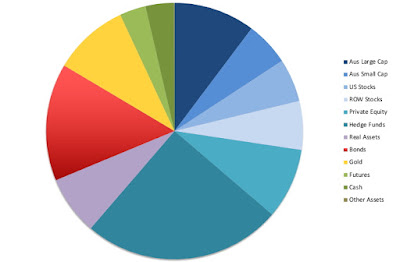I just completed our tax returns for this year. As usual they only took a few hours as I am very well-prepared with spreadsheets updated throughout the year. Preparing taxes is mainly a case of checking that all the spreadsheet links and calculations are correct and refreshing my memory about some of the details of what goes where on the tax form. Last year's taxes are here.
Here is a summary of my taxes (To make things clearer, I reclassify a few items compared to the actual tax form):
On the income side, Australian dividends, capital gains, and foreign
source income are all up strongly. My salary still dominates my income sources but is not really growing and we have a pay freeze for next year.
Interest is Australian interest only and is up strongly due to interest on Macquarie, Woolworths, and Virgin Australia bonds.
Unfranked distributions from trusts is up strongly due to the huge distribution from the APSEC fund I invested in just before the end of the tax year. That was a bad move. Foreign source income is mostly dominated by foreign bond interest and losses on futures trading. Other income is gains on selling bonds. These aren't counted as capital gains.
After recording a net capital gain for the first time
in a decade last year, I again have zero capital gains and I am carrying forward around $150k in losses to next year. Foreign source income is mostly from futures trading and
bond interest.
In total, gross income rose 6%.
Increased deductions are mostly due to losses on selling bonds. Interest rates are historically low and most bonds that you will be able to buy have higher nominal interest rates. As a result, these bonds are priced above par. If you hold them to maturity you have a loss that is more than offset by the interest received.
Dividend, foreign source income, and trust deductions are all mostly interest on loans.
Total deductions rose strongly, and as a result, net income fell 2%.
Gross tax is computed by applying the rates in the tax table to the net income. In Australia, you don't enter the tax due in your tax return, but I like to compute it so that I know how big or small my refund will be.
Franking credits (from Australian dividends), foreign tax paid, and the
Early Stage Venture Capital (ESVCLP) offset are all deducted from gross
tax to arrive at the tax assessment. I again expect to pay extra tax.
I paid 30% of net income in tax. Tax was withheld on my salary at an average rate of 32%.
Moominmama's (formerly Snork Maiden) taxes follow:
Her salary was down a lot because of maternity leave. Dividends and capital gains were up strongly due to investment in various listed investment companies and Commonwealth Bank hybrid securities. Foreign source income was down strongly due to losing on trading this year rather than gaining last tax year. As a result, total income fell by 23%.
Deductions rose dramatically, because of recording trading losses as deductions and starting to deduct interest against dividends. As a result, net income fell 42%. Tax was 15% of net income. Tax withheld on her salary was really high for this income level.
Because income was very high last year, Moominmama had to pay tax installments every three months over the last year. As a result, her expected tax refund is almost as large as my expected tax payment. On net, we need to pay about $500 in extra tax.















































